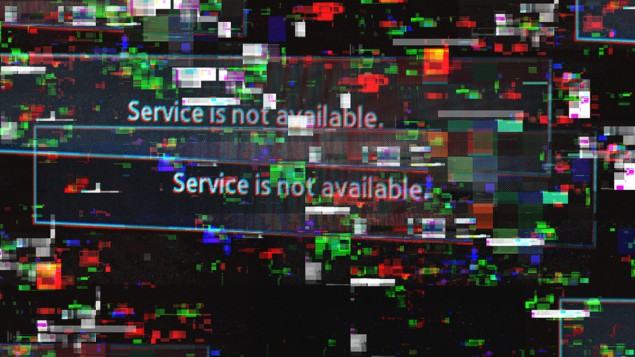Ian Randall reviews Communications Breakdown: SF Stories about the Future of Connection edited by Jonathan Strahan

“A sight never to be forgotten.”
“Heaven became illuminated.”
“Nothing could exceed the grandeur and the beauty.”
These are just some of the phrases used by eyewitnesses to describe the remarkable aurora that danced over much of the globe for three special nights in early September 1859. Visible at unprecedented low latitude locations, including Colombia, Hawaii and Queensland, the light show was the result of the most intense geomagnetic storm in recorded history. Dubbed “The Carrington Event”, the episode was triggered by the direct collision between Earth’s magnetosphere and a major coronal mass ejection from the Sun.
Astonishing phenomena were induced – both literally and figuratively – in the telegraph networks of Europe and North America, and the transatlantic cable that freshly connected them. Currents induced in the cables caused telegraph pylons to spark, some operators reported receiving electric shocks, and many connections failed completely. Other lines, meanwhile, were found to function even once the power to them had been cut.
While the fibre-optic cables that make up the backbone of today’s Internet are, given their composition, immune to the electromagnetic fluctuations of solar storms, the same cannot be said of signal boosters, which punctuate undersea cables to ensure connection can be supported over long distances. Moreover, a major space weather event today could also disrupt radio communications, interfere with satellite operations and take out power grids.
That’s not as unlikely as it sounds – in early 1989 a solar storm triggered by a coronal mass ejection famously plunged nine million people in Quebec, Canada, into a blackout that lasted around nine hours. Some astrophysicists have estimated that there is roughly a 2–12% chance that a solar storm hitting Earth in the next decade could cause catastrophic disruption to modern society.
From fact to fiction
The effect of such a modern-day Carrington Event is explored in Sigh No More, one of the engrossing tales in Communications Breakdown: SF Stories about the Future of Connection – a science-fiction anthology compiled by Hugo Award-winning publisher and editor Jonathan Strahan as part of MIT Press’s Twelve Tomorrows series. The book presents 10 short stories on the future of communication and the pitfalls of inequalities in it. It also includes an interview with surveillance and privacy researcher Chris Gilliard of the Shorenstein Center on Media, Politics and Public Policy.
Written by Ian McDonald, Sigh No More (whose title will be appreciated by theatre aficionados) takes an indirect look at the effect of a series of catastrophic space weather phenomena through the lens of a plucky community theatre production of Much Ado About Nothing. Undaunted by the modern apocalypse, these “idiots trying to put on Shakespeare” overcome enduring blackouts, paralysed transportation systems and muggers exploiting the return of a hard-cash economy, to go “full Bard” in Millwall Park in a neat little ending that relies on some aspects borrowed from the original Carrington Event.
Influencing the fabric of Sigh No More is the fact that Communications Breakdown was compiled in the wake of COVID-19. In fact, the pandemic is referenced multiple times and reverberates throughout the anthology – perhaps because that socially isolating period highlighted the importance of modern communication systems. Sigh No More envisages a reversal of this situation, imagining that “When the Sun blew a ten-billion-ton plasma kiss at Earth, there were no online quizzes, no Microsoft Teams meetings, no Zoom play-readings, no tweeting on shared Netflix experiences. The Event shut down human communications but opened a thousand doors to human contact.”
Battling corruption
Another story that is likely to picque the interest of the scientist reader is Premee Mohamed’s At Every Door A Ghost. In this tale, a pair of researchers turn to covert research in the wake of an AI-driven chemical weapons attack that sees the production of scientific knowledge both constrained and aggressively surveilled.
In fact, many of the stories pit their protagonists against overbearing, corrupt and uncaring systems. For example, in Company Man by Shiv Ramdas the enemy is a medical device firm whose bizarre, impersonal and crushing administrative ethos is straight out of a Franz Kafka novel; while in Moral Hazard by Cory Doctorow it’s a Supreme Court decision that sees all weather warnings placed behind paywalls. (The latter focuses on hacking and punk subculture, which, along with its setting, brought to mind Neal Stephenson’s iconic novel Snow Crash.) It also feels pointed that the two works feature ordinary people becoming corporations to acquire the power not permitted to them under the decidedly neoliberal status quo of their narratives.
As Strahan himself notes in his forward, while such moments in the anthology’s stories can be seen as “dark or depressing”, they also “show the possibility of solutions, of things getting better, of improvement”. Or, as the cast of the Millwall Much Ado might have put it – if “all the world’s a stage, and all the men and women merely players”, then the show must go on!
- 2023 MIT Press 224pp £21hb
- SEO Powered Content & PR Distribution. Get Amplified Today.
- PlatoData.Network Vertical Generative Ai. Empower Yourself. Access Here.
- PlatoAiStream. Web3 Intelligence. Knowledge Amplified. Access Here.
- PlatoESG. Carbon, CleanTech, Energy, Environment, Solar, Waste Management. Access Here.
- PlatoHealth. Biotech and Clinical Trials Intelligence. Access Here.
- Source: https://physicsworld.com/a/what-would-happen-if-communication-systems-broke-down/



